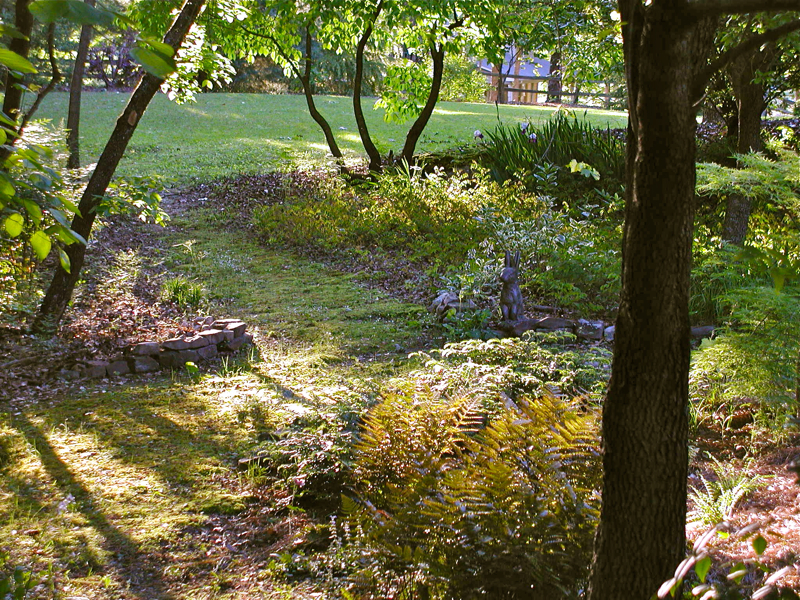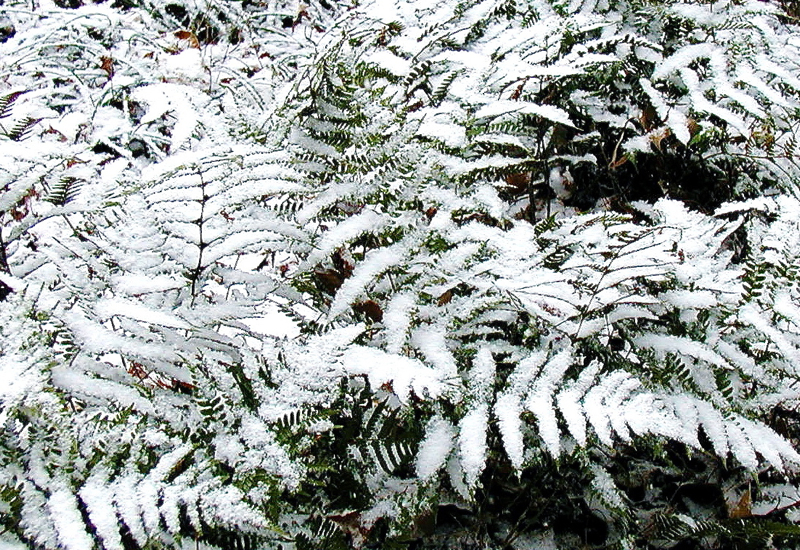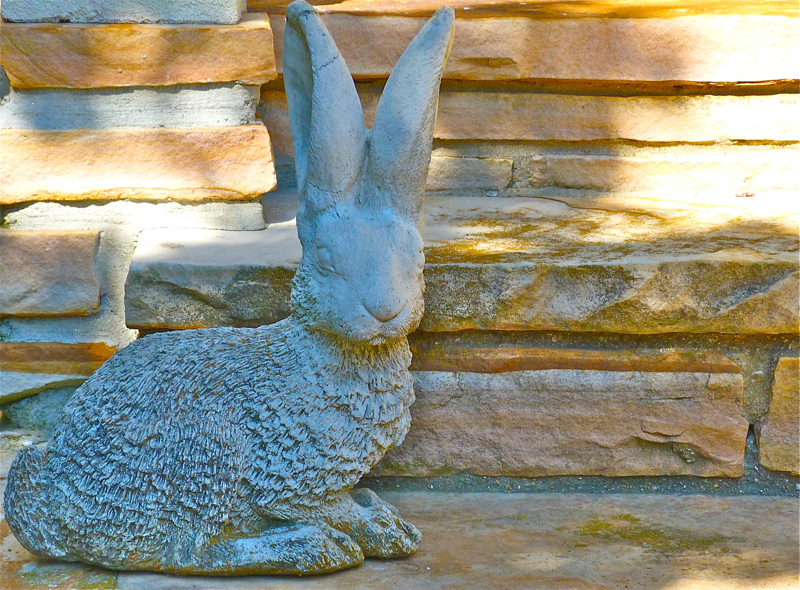Autumn Fern, My Great All Season Fern
 Monday, August 15, 2011 at 2:00PM
Monday, August 15, 2011 at 2:00PM I am most appreciative of Autumn fern during the stale, hot days of August. This durable fern grows in my woodland garden, far from the water hose, but it has survived weather that sends other ferns into dormancy, or worse, to death.
When I first started planting a garden in the woods, I imagined great swaths of ferns. The reality is that soil under the big trees is thin and dry, and ferns generally need moist, rich organic soil. Autumn fern will grow best in those conditions, too, and I am working to improve the natural environment by regularly adding mulch and compost. But Autumn fern, once established, will tolerate drier and poorer conditions than many of its pickier cousins. Like most ferns it prefers partial to full shade, but with extra water it can take some sun.
Dryopteris erythrosora is as beautiful as it is durable. It is distinguished by pink fiddleheads in the spring, which unfurl to coppery pink fronds, which mature to rich green.
Autumn Fern will grow in zones 5-9, and in areas with mild winters like mine, it is evergreen. The colorful spring growth contrasts nicely with its older green foliage.
Autumn fern looks good planted in mass. They should be planted about eighteen inches apart. Spores form on the undersides of the ferns. The following photos show the springtime fiddleheads and the summer spores:Growing up to two feet tall and wide, they will spread slowly to form clumps and can be divided every three to four years. A clump grows at the base of the tree seen on the right in the following photo of my woodland garden. Afternoon light is shining through the fronds:

Since it is evergreen in my area, Autumn fern adds good structure to the winter landscape. I like the way it looks frosted with snow:
Damaged or unsightly fronds can be cut back in late winter to neaten the clump and prepare for spring growth.
 Permalink
Permalink  autumn fern,
autumn fern,  ferns,
ferns,  woodland garden in
woodland garden in  evergreens,
evergreens,  ferns,
ferns,  woodland garden
woodland garden 